Jasmine plants, with their exquisite blooms and enchanting fragrances, have captivated gardeners and nature enthusiasts for centuries. As the mercury drops and frost blankets the landscape, it becomes crucial to take proactive measures. But, how can you care for a jasmine plant during winter?
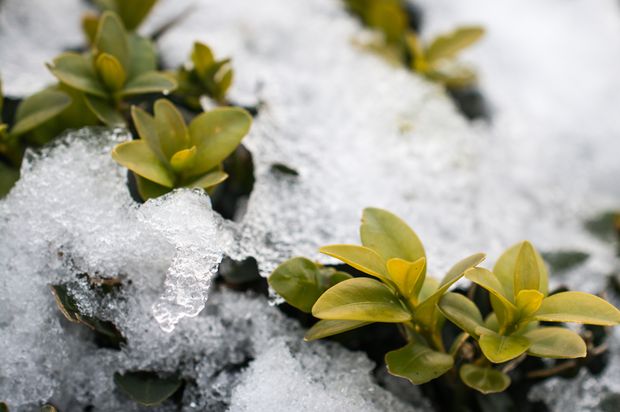
Prune the plant, apply mulch, provide shelter, reduce watering, and avoid fertilising. Help your jasmine plant survive the winter and thrive in the following seasons.
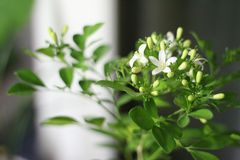
Jasmine plants (genus Jasminum) encompass a diverse group of species, each possessing its unique charm and characteristics. Whether it's the delicate white petals of the Jasminum officinale or the vibrant yellow blossoms of the Jasminum humile, these plants share a common vulnerability to cold temperatures. Winter poses a significant challenge to their survival, as freezing conditions can cause damage to their tender foliage and hinder overall growth and vigour.
How to Keep a Jasmine Plant Indoors in Winter?
The winter chill has arrived, and it's time to cozy up with your jasmine plant indoors. Creating a nurturing environment for your precious plant during the colder months is crucial to its well-being. Let's dive into the essential steps and tips to keep your jasmine thriving while tucked away indoors.
Hey! Check out How to keep your Arabian Jasmine indoors in the winter to learn about how to keep your Jasmines happy during the wintertime!
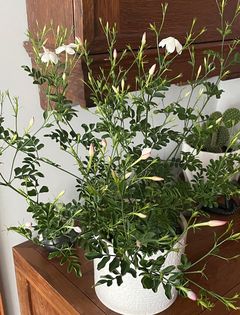
- Choose the right location: Select a spot in your home that offers bright, indirect light for your jasmine. South-facing windows are often ideal, as they provide ample sunlight without exposing the plant to direct cold drafts.
- Maintain consistent temperatures: Jasmine plants prefer temperatures between 60°F and 75°F (15°C to 24°C) during the day and slightly cooler temperatures at night. Avoid placing your jasmine near heat sources or in areas prone to temperature fluctuations, such as near doorways or vents.
- Provide adequate humidity: Indoor environments can be drier during winter due to heating systems. To create a humid microclimate for your jasmine, place a planter tray filled with water and pebbles beneath the pot. As the water evaporates, it will increase the humidity around the plant. Alternatively, use a humidifier or mist the leaves occasionally.
- Water appropriately: During winter, jasmine plants require less frequent watering. Allow the top inch of soil to dry out between waterings. Ensure that the pot has proper drainage to prevent waterlogged roots, which can lead to root rot.
- Adjust fertilisation: Reduce or suspend fertilising your jasmine during winter. The plant's growth slows during this time, requiring fewer nutrients. Resume regular fertilisation in spring when the plant begins actively growing again.
- Prune selectively: If your jasmine shows signs of leggy growth or becomes too unruly indoors, you can selectively prune it during winter. Focus on removing dead, damaged, or overcrowded branches. Pruning will help maintain its shape and promote healthy growth when spring arrives.
- Monitor for pests: Indoor environments can be conducive to pest infestations. Keep a close eye on your jasmine plant for any signs of pests, such as aphids or spider mites. If detected, promptly treat the infestation using appropriate organic or chemical methods.
Hey! Check out How to get rid of aphids in your Jasmine plant to learn more about how to destroy these nasty pests!
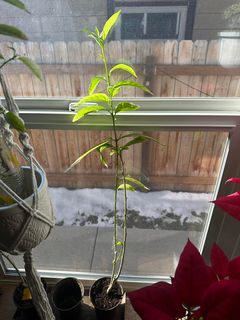
Creating a nurturing environment for your jasmine plant during the winter months will ensure its well-being and allow it to thrive indoors. By providing the right amount of light, maintaining consistent temperatures, and ensuring adequate humidity, you can mimic its natural habitat. Adjusting your watering schedule, pruning selectively, and monitoring for pests will further contribute to its overall health. With your dedicated care and attention, your indoor jasmine will continue to grace your home with its vibrant foliage and fragrant blooms, bringing a touch of warmth and beauty to the winter season.
How to Store Jasmine in the Winter?
If you find yourself needing to store your jasmine plant during the winter months, proper storage is essential to protect it from the harsh cold and ensure its survival. Here are some key steps to follow:
- Timing is crucial: Plan to store your jasmine plant before the first frost arrives. This will help prevent any potential damage caused by freezing temperatures.
- Prune and prepare: Prior to storage, carefully prune your jasmine plant, removing any dead or damaged branches. This will promote healthier growth when it emerges from storage. Take the opportunity to inspect and address any pest or disease issues as well.
- Choose the right container: If your jasmine is potted, simply prepare it for storage as is. If it's planted in the ground, carefully dig it up, trying to preserve as many roots as possible. Transfer it to a container with well-draining soil if necessary.
My top recommendation here is to use winter containers with aeration to maintain the airflow going to keep the Jasmines growing through the winter
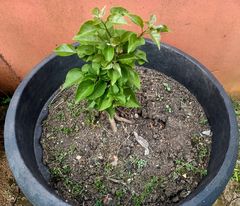
- Find a suitable storage location: Look for a cool, dark, and frost-free area to store your jasmine plant. Options include an unheated garage, a basement, or a cool room in your home. Aim for a temperature around 40°F to 50°F (4°C to 10°C).
- Control moisture levels: Water your jasmine plant sparingly during storage to keep the soil slightly moist, but not overly wet. This will help prevent both drying out and waterlogged conditions. Monitor the moisture levels periodically and adjust watering as needed.
- Regular monitoring: Check on your stored jasmine plant throughout the winter. Inspect for any signs of pests, diseases, or extreme dryness. Address any issues promptly to ensure the plant's well-being.
- Gradual re-introduction: As spring approaches and the danger of frost subsides, gradually reintroduce your jasmine plant to outdoor conditions. Begin by placing it in a sheltered location for a few hours each day, gradually increasing the time spent outside over the course of a week or two.
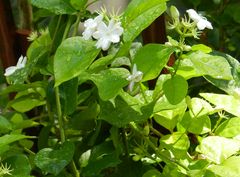
Does Jasmine come back every year?
Well, the answer depends on the specific type of jasmine you have in your garden. Allow me to shed some light on this blooming query.
Most jasmine varieties are indeed perennials, meaning they can come back year after year, adding their aromatic charm to your garden. However, it's important to note that some jasmine species are more cold-hardy than others. Hardy jasmine varieties, such as Jasminum officinale and Jasminum nudiflorum, are known to withstand colder temperatures and can reliably return each year in milder climates.
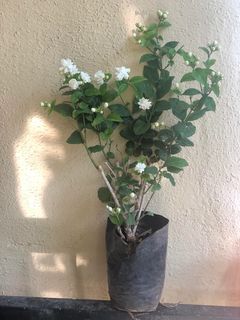
In regions with harsher winters, where temperatures drop significantly below freezing, certain jasmine species may struggle to survive outdoors. For these more tender varieties, such as Jasminum polyanthum, winter protection becomes paramount.
Check out How to protect your Jasmine from a frost here!
By providing proper care, and insulation, and potentially bringing them indoors during the coldest months, you can increase their chances of making a triumphant comeback when spring arrives.
Remember, even for the hardiest jasmine plants, factors like soil conditions, sunlight exposure, and overall plant health can influence their ability to thrive and return reliably. By providing optimal growing conditions and attentive care throughout the year, you enhance the likelihood of your jasmine gracing your garden with its fragrant presence for many seasons to come.
While jasmine generally possesses the inherent perennial magic, it is essential to consider the specific species and regional climate when determining its long-term survival in your garden. With a little tender love and care, your jasmine may very well become a faithful and fragrant companion, gracing your landscape year after year.
When should I bring my jasmine plant inside?
The timing of bringing your cherished jasmine plant indoors is a crucial decision. As an experienced gardener, I can offer some guidance on finding the right moment. The general rule of thumb is to act before the first frost sneaks in. Keep an eye on the weather forecast and make a move when temperatures start to drop consistently below 50°F (10°C) during the day. Don't wait until winter's icy grip tightens—it's better to play it safe and give your delicate jasmine a cozy indoor sanctuary in advance. Remember, prevention is key when it comes to protecting your plant from potential cold-induced stress.
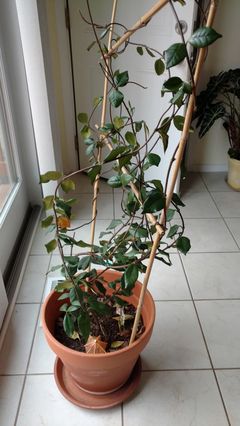
Once you have determined the appropriate time, gently prepare your jasmine for the transition. Give it a thorough inspection, ensuring there are no pests hitching a ride indoors. Consider trimming any overgrown branches to facilitate easier accommodation. Take a moment to appreciate its beauty as you carefully transport it inside, ready to embark on a cozy winter adventure within the comfort of your home.
By bringing your jasmine plant inside at the right time, you are taking a proactive step to shield it from harsh winter conditions. This thoughtful care will help ensure its health and well-being as you navigate the colder months together. So, keep a watchful eye on the weather, and when the time is right, let your jasmine plant know it is time to cozy up indoors.
Will Jasmine come back after the freeze?
The freezing fingers of winter can be a concern for our beloved jasmine plants. If you have experienced a freeze, you may wonder if your jasmine will bounce back from the icy grip. Let me shed some light on this chilly matter.
Check out Does Jasmine die back in the winter to learn more about what to expect in the wintertime!
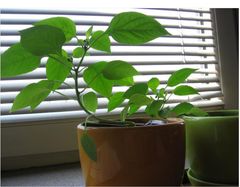
The resilience of jasmine plants can be quite remarkable, but the extent to which they can recover from a freeze depends on various factors, including the severity of the freeze and the specific jasmine species. Hardy jasmine varieties have a better chance of surviving and regenerating after a freeze compared to more tender species.
If your jasmine has experienced a freeze, don't despair just yet. Once the threat of freezing temperatures has passed, assessing the damage is essential. Begin by carefully examining the foliage and branches for signs of life. If you notice browning, shrivelled leaves or stems, it's likely that those parts have suffered damage.
To give your Jasmine the best chance of recovery, you can take a two-step approach. First, prune away any dead or damaged branches, cutting them back to healthy growth. This will promote new growth and prevent potential disease or insect infestation. Second, provide your jasmine with optimal care and attention, including proper watering, sunlight, and fertilisation as the growing season progresses. With time and nurturing, your jasmine may surprise you by regenerating and making a comeback.
However, it is important to note that severe freezes can be detrimental to jasmine plants, especially those that are more sensitive to cold temperatures. In such cases, the recovery may be more challenging, and the plant may require extra care, including potential reestablishment from cuttings or replanting with new specimens.
Remember, prevention is always the best course of action. Taking proactive measures to protect your jasmine from freezes, such as providing winter shelter or moving potted plants indoors, can significantly increase their chances of survival.
While a freeze can pose a challenge for jasmine plants, don't lose hope. With patience, care, and a touch of luck, your resilient jasmine may bounce back and continue to enchant you with its fragrant blooms.
Final Thoughts
Storing your jasmine plant during winter doesn't have to be a daunting task. Just remember to time it right, prune it with care, find a cool and cozy spot, and keep an eye on its moisture levels.
Don't forget to give it a visit every now and then to make sure everything is in order. And when spring comes knocking, gradually reintroduce your jasmine to the great outdoors. With a little TLC, your jasmine will be ready to bloom and fill the air with its delightful fragrance once again. Happy storing and looking forward to the sunny days ahead!
